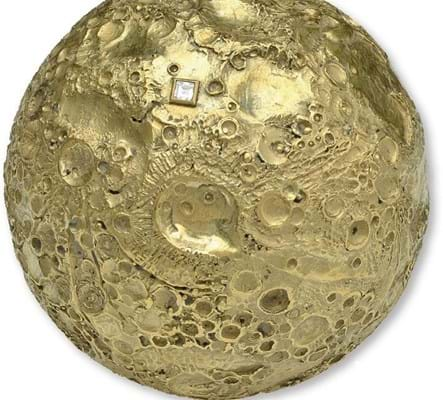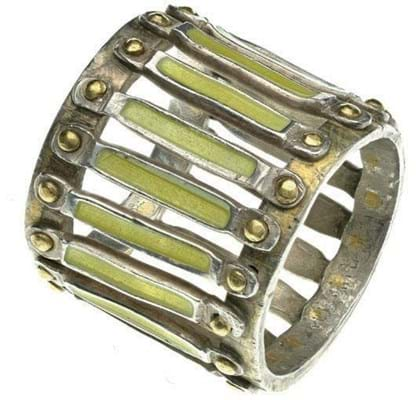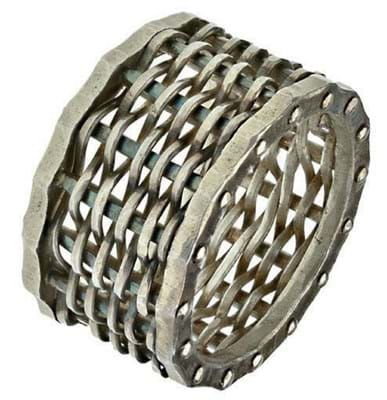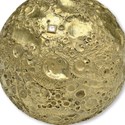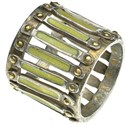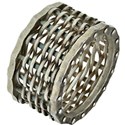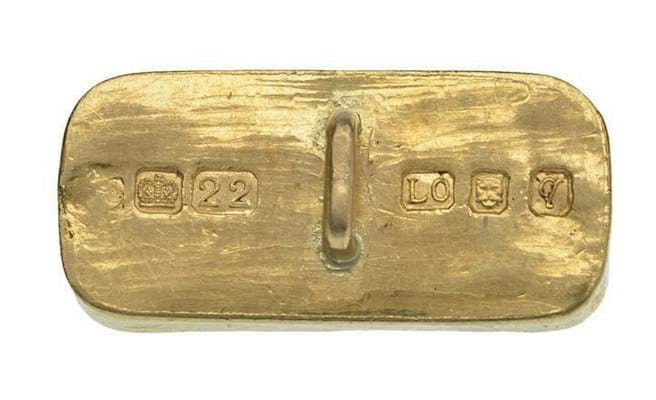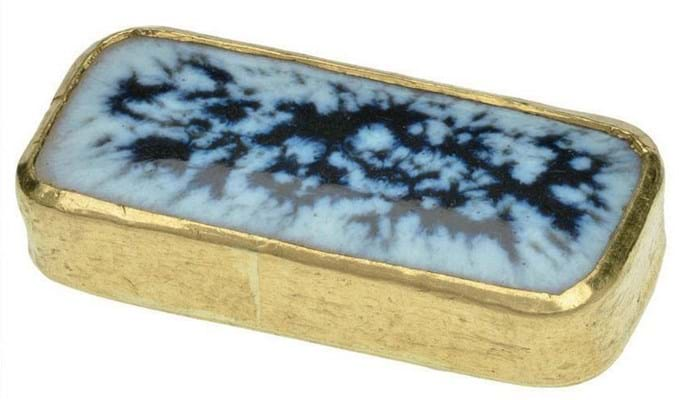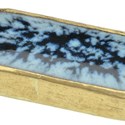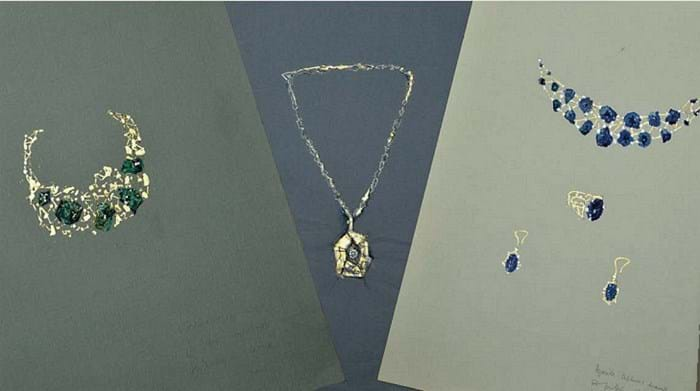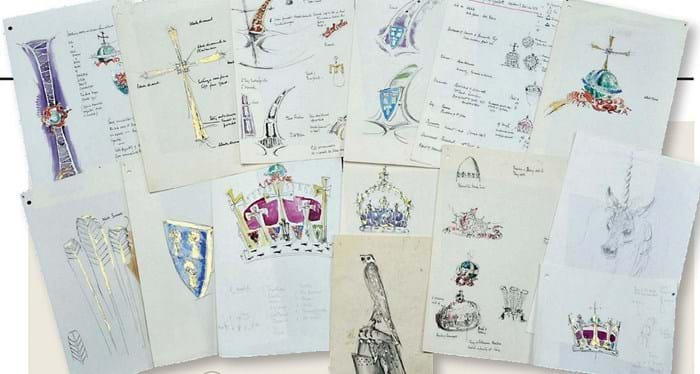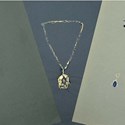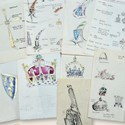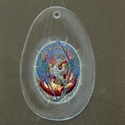The Exeter-born Osman came to metalworking relatively late, having enjoyed a successful first career as an architect.
His talent and individual style brought numerous commissions, including the 24ct gold coronet he designed and made on behalf of the Goldsmiths’ Company for the investiture of Charles, Prince of Wales, in 1969.
Rather than using the traditional methods of hammering or casting elements for the project, Osman opted for the unusual method of electroforming in a size and scale never attempted before in goldwork.
His success in attracting interesting commissions, while also steering clear of mass production, has resulted in a secondary market hungry for his work.
In 2011, Osman’s ‘Prince of Wales Cup’, a unique piece made with the engraver Malcolm Appleby (b.1946), sold at Bonhams for £60,000, a record for English post-war silver at the time.
It was with some fanfare, therefore, that a small personal archive of Osman’s design sketches and commissioned pieces appeared at Dix Noonan Webb (20% buyer’s premium). Consigned by his daughter and offered in an auction of Jewellery, Watches and Objects of Vertu on March 27, the archive attracted enquiries from the Royal Collection, the Goldsmiths’ Company and craftsmen who had worked with Osman in the 1960s-‘70s.
Star lot
All 21 lots found buyers, to total £55,530. The uncontested star was a 22ct gold model of the moon designed by Osman in another collaboration with Appleby. It was one of a small number commissioned by stockbroker Simon Horn to mark the Apollo moon landing in July 1969 with a diamond set on each model at the point of the landing site.
Astronauts Neil Armstrong, Buzz Aldrin and Michael Collins each received a model, as did President John F Kennedy’s mother, Rose, in remembrance of her son’s famous statement to Congress in 1961.
DNW’s example had remained in Osman’s possession and took pride of place on the mantelpiece in his dining room. Estimated at an enticing £4000-6000, fierce bidding pushed the price to £22,000 where it was knocked down to an overseas collector. Only one other of Osman’s moons appears to have sold at auction in recent years, fetching $15,000 (£10,400) at Christie’s New York in April 2016.
Lucie Rie input
Alongside Appleby, another of Osman’s collaborators was the famed British ceramicist Dame Lucie Rie (1902-95). In 1984, the pair produced two pieces for the British Exhibition in Tokyo – Rie’s white porcelain bowls displayed on Osman’s Britannia silver and silver gilt stands.
Included in the archive was a shallow 14in (35cm) wide porcelain bowl with white orange skin glaze atop a Britannia standard silver circular stand, hallmarked for London, 1984. Despite repair work, chips and a visible hairline crack to the bowl, it sold for six times the top guide at £4800.
The most keenly contested among three pieces of wearable jewellery was a silver ring composed of two narrow bands connected by batons in bright yellow-green enamel. Not hallmarked, but bearing Osman’s maker’s mark, it sold for £7000, well above the £150-200 guide.
Osman designs at DNW
Louis Osman’s design drawings for jewellery and other metalwork made up the majority of the DNW collection.
Most sought-after was the archive of sketches relating to the making of the coronet for the Prince of Wales’ investiture at Caernarvon Castle in 1969.
The lot, which also included the model ‘head’ on which the crown was constructed, was knocked down to an American buyer at £5500, well in excess of the £400-600 guide.
Provisional drawings for two well-known silver commissions, the Magna Carta casket (used to house one of the four copies of the Magna Carta loaned by Britain to the US), and a freestanding lectern commissioned by the Victoria and Albert Museum, took £2800 against a £400-600 guide.


